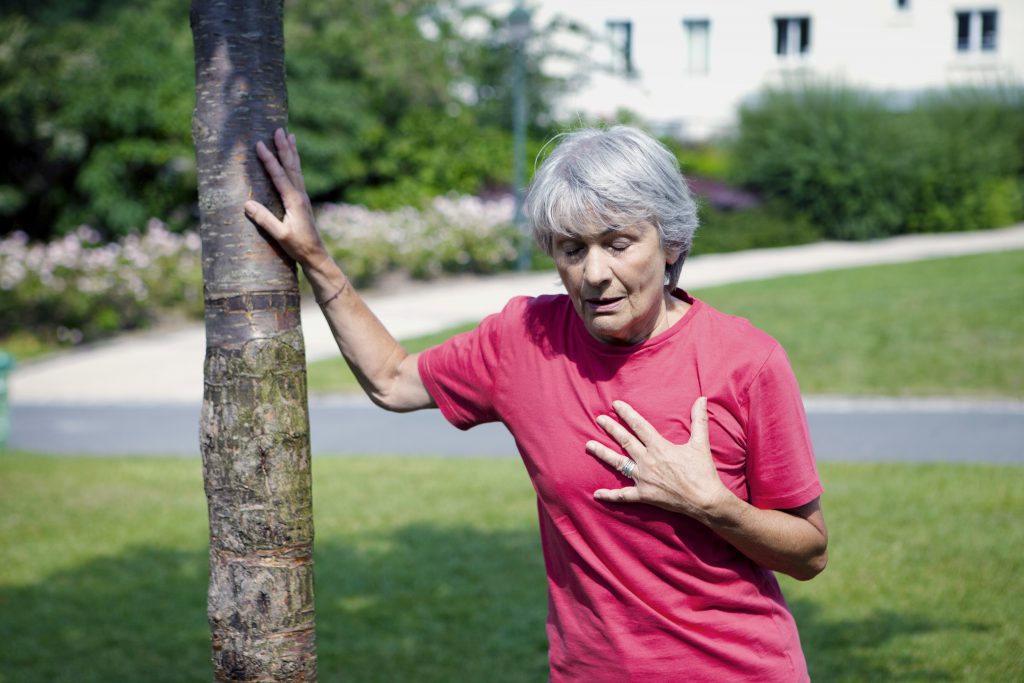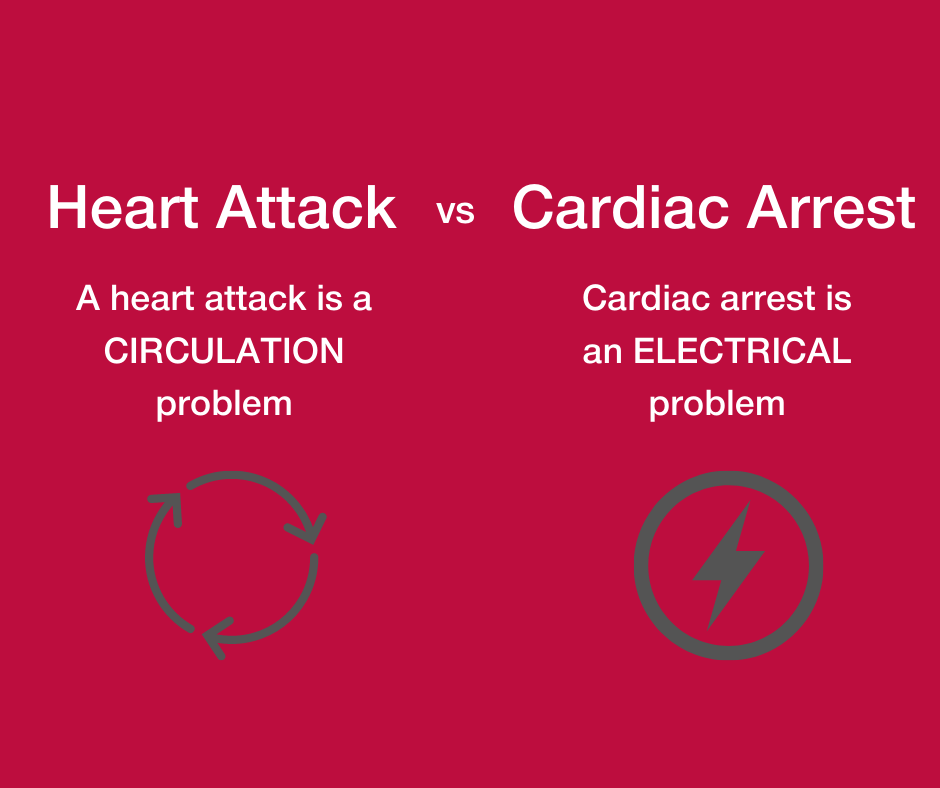Each year, around 54,000 Australians suffer a heart attack with an Australian having a heart attack every 10 minutes.

What is a heart attack?
A heart attack occurs when the narrowing of the artery becomes completely blocked, causing the heart muscle beyond the blockage to become oxygen starved.
How does a heart attack differ from a cardiac arrest?
Heart attacks are caused by a blockage that stops blood flow to the heart.
A cardiac arrest is caused when the heart’s electrical system malfunctions. In cardiac arrest, death results when the heart suddenly stops working properly. This may be caused by abnormal, or irregular, heart rhythms (called arrhythmias).
A sudden cardiac arrest can occur after a heart attack, or during recovery.

How to tell if you are having a heart attack?
Everyone should know how to recognise a heart attack for two very good reasons. Firstly, the odds are high that either you or someone you love will suffer from a heart attack during your lifetime. Secondly, whether you survive that heart attack can depend on what you and your doctors do about it during the first few hours.
Two of the biggest and most dangerous mistakes people make about heart attacks is:
1) assuming the signs are the same for everyone
2) dismissing their symptoms and thinking they’ll just go away. That results in people not acting quickly enough.
The longer people delay getting medical attention, the more potential damage is done to the heart muscle. Heart Research Australia strongly recommend calling 000 if you suspect you or someone nearby is having a heart attack as information can be given over the phone, and ambulance workers can start working on you straight away.
Many people assume that all heart attacks happen like in the movies – sudden and intense pain in the chest that causes someone to collapse. If that were the case, it would be easy to know when to go to the hospital. In reality, the signs can be less obvious and vary between individuals.
While chest pain is the classic symptom of a heart attack, other kinds of symptoms can occur in addition to, or instead of, chest discomfort.
The symptoms of a heart attack can be similar to those for angina, with the addition of any or all of the following:
- Dull pain, chest tightness or discomfort that becomes more severe and does not go away
- Jaw and neck pain
- Severe pain that is often described as ‘crushing’
- A squeezing or choking sensation
- Nausea / feeling sick in the stomach
- Fainting
- Sweating
- Pain the shoulder and/or arms
- Pain from the chest to the back
- Similar sensations to heart burn
- Sudden difficulty breathing
- Sudden overwhelming fatigue or weakness
- Flu-like symptoms
If you or someone else experience any combination of these symptoms for more than a few minutes, immediately call 000 for an ambulance.
Symptoms can vary significantly for women vs men and be more subtle and difficult to identify, often causing women to have poorer outcomes than men.
Order our double-sided wallet card highlighting the different symptoms for men vs women and heart attack action plan here.
Women and heart disease
Women need to know about heart disease – sadly, it kills more Australian women than breast cancer.
Whilst chest pressure is still the leading complaint for women, women often experience different heart attack symptoms compared to men – they are more likely to also report nausea, sweating, vomiting, pain in the neck, jaw, throat, or back.
To learn more about women and heart disease click here.
To order our double-sided wallet card highlighting the difference in symptoms between men and women click here.
Heart attack action plan
If you think someone may be having a heart attack, regard this as an emergency. Do not waste vital moments. Rather than going to a doctor’s clinic, take these steps:
- Dial triple zero (000) in Australia.
- Ask for ambulance service.
- Report a possible heart attack.
- Give the person an aspirin if you have any, unless they have been advised not to take this particular medication.
- Make sure they rest quietly while you wait for transport or an ambulance.
- If an ambulance is not readily available (for example, in some rural areas), quickly notify the nearest hospital, health clinic or the person’s usual doctor for advice.
Heart health club
We invite you to join our Heart Health Club, which offers members expert advice, information and support that can assist in making lifestyle changes to improve your heart health.
Members receive access to exclusive offers and information, including:
- Access to quarterly free video content from specialists.
- Mental Wellbeing guidance and strategies to support you through your heart health journey.
- Exclusive free webinars with our cardiologists and other health experts.
- Access to our private Facebook community group where heart patients and carers share support and advice.
- Exercise tips and programmes from Accredited Exercise Physiologists
- Heart Healthy Recipes
- Quarterly E-Newsletters with lots of great heart healthy content, tips and advice from Cardiologists as well as the latest research from our Researchers.
To join the Heart Health Club, simply click here to complete your application.
Heart Research Australia is a not-for-profit organisation that funds first stage research into the prevention, diagnosis and treatment of heart disease.
We can only do this with your support.
If you were able to leave a donation to help our researchers continue their ground breaking work we would be so grateful.
Together, we can change the future of heart disease.

Donate today to create breakthroughs in heart disease
Heart disease affects 2 in 3 Australians and still remains our leading cause of death. But you can help.
By making a donation to Heart Research Australia, you can help fund exciting and world first studies into Heart Disease. And together, we can make breakthroughs in heart disease happen.
